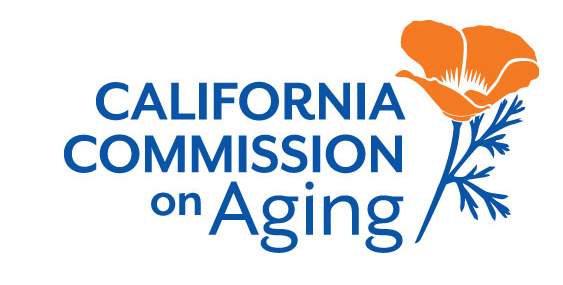2005 White House Conference on Aging Fact Sheet
-
What is the White House Conference on Aging?
White House Conferences on Aging are decennial events held to develop recommendations for the President and Congress on issues, policy and research in the field of aging.
-
When/where will the next White House Conference on Aging be held?
The 2005 White House Conference on Aging will be held December 11-14, 2005 at the Marriott Wardman Park Hotel in Washington, D.C.
-
What is the theme of the 2005 conference?
The theme of the 2005 White House Conference on Aging is "The Booming Dynamics of Aging - From Awareness to Action, " which reflects the unique mandate of the Conference to focus on the aging population of today and tomorrow. The theme highlights the changing face of aging in the United States.
-
What is the Policy Committee’s role, who makes up its members, and how were they selected?
The Policy Committee is made up of 17 members appointed by the President and Congress. The President selected nine members and Congress selected eight members. The Policy Committee’s role is to provide general direction and guidance for the White House Conference on Aging. Duties of the Policy Committee are to:
- Make recommendations to the Secretary of the Department of Health and Human Services to facilitate timely convening of the Conference,
- Formulate and approve a proposed agenda,
- Make recommendations for participants and delegates,
- Establish the number of delegates to be selected,
- Establish an executive committee, and other committees as needed that have a majority of such members age 55 or older.
The Honorable Dorcus R. Hardy, former Commissioner of Social Security, is Chairman of the Committee.
Melvin L. Woods, President Rubicon Public Affairs, and a Granite Bay resident; and The Honorable Howard P. “Buck” Mckeon (R-CA) are members of the Policy Committee.
-
How will delegates be selected for the Conference, and how many will be selected?
On December 1, the Policy Committee for the 2005 White House Conference on Aging voted to invite 1,200 individuals to serve as delegates to the historic 2005 Conference. Delegates to the Conference will have the responsibility for presenting recommendations to the President and Congress to help guide aging policies for the next decade and beyond. The delegates will represent:
- Governors of all 50 states, the U.S. Territories, the Commonwealth of Puerto Rico and the District of Columbia
- National Congress of American Indians
- Members of the 109th Congress
- National aging and other allied organizations, academic institutions, business and industry, non-profit and veterans’ organizations and other entities with a stake in the aging of America.
The Policy Committee will ensure that delegates represent the diverse population of the United States as mandated by the Older Americans Act Amendments of 2000 (P.L. 106-501). Because of space constraints at the location available for the Conference, the Committee is working to ensure maximum additional access through the use of Internet web casting. Web casting will allow the Conference proceedings to be observed on computers in homes and communities around the country and throughout the world.
-
How many delegates were selected to represent California?
California has the largest aging population in the country with 4+million seniors. It also has the largest number of representatives attending 2005 White House Conference on Aging. The one hundred eighteen California delegates attending the conference were appointed as follows:
- Twelve Gubernatorial appointees
- One representative from the National Congress of American Indians
- Fifty five Congressional Delegates
- Fifty Policy Committee’s At-Large Delegates
-
What are the issues to be considered by the delegates to the 2005 White House Conference on Aging?
On October 1, 2004, the Policy Committee adopted a broad agenda for the 2005 White House Conference on Aging. The agenda items are:
- Planning along the Lifespan
- The Workplace of the Future
- Our Community
- Health and Long Term Living
- Civic and Social Engagement
- Technology and Innovation in an Emerging Senior/Boomer Marketplace
The Policy Committee also approved an annotated agenda, which incorporates additional specific issues into the broad agenda.
-
What are Listening Sessions and Solutions Forums?
Beginning in August 2004 and continuing through January 2005, the Policy Committee attended Listening Sessions to educate and inform its members about the key issues around the broad agenda that should be addressed by the 2005 White House Conference on Aging. The Policy Committee finalized the list of issues in February 2005. From February 2005 through July 2005, Listening Sessions replaced the Solution Forums as the Policy Committee continued to solicit input from stakeholders on possible solutions and recommendations for potential consideration as Conference resolutions.
The California Commission on Aging (CCoA) hosted a Solutions Forum in Sacramento on March 9, 2005. A second Solutions Forum was held in Los Angeles in April. Additional WHCoA events were held around the state.
-
What is the federal appropriation for the 2005 White House Conference on Aging?
$2,842,000 was appropriated for FY 2004. $ 4,520,000 was included as part of the FY 2005 President’s Budget request. No federal funds are available for state WHCoA functions and activities.
-
What state entity in California will be responsible for delegate solicitation and orientation?
Governor Arnold Schwarzenegger has designated the CCoA to be the state entity responsible for delegate solicitation and orientation. In addition, the CCoA will work with the Administration in the preparation of Issues Papers around selected topics. The CCoA will work in partnership with the California Department of Aging on selected activities.
-
When is California planning an orientation for its delegates?
The CCoA is coordinating delegate orientation and training for November 7, 2005 at the Convention Center in Sacramento.
-
What follow up activies are being planned?
The CCoA, along with the Administration, will be determining a range of post WHCoA activities for the State of California. These may include publicity, information, media releases and subsequent gathering of delegates.


